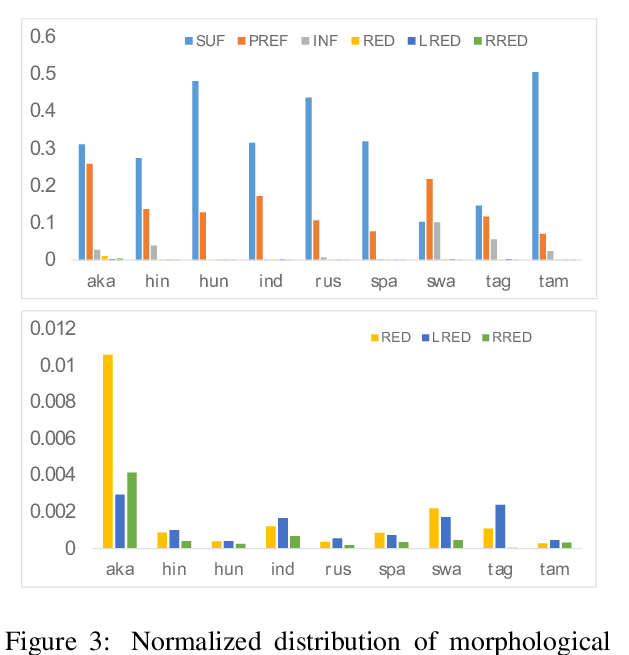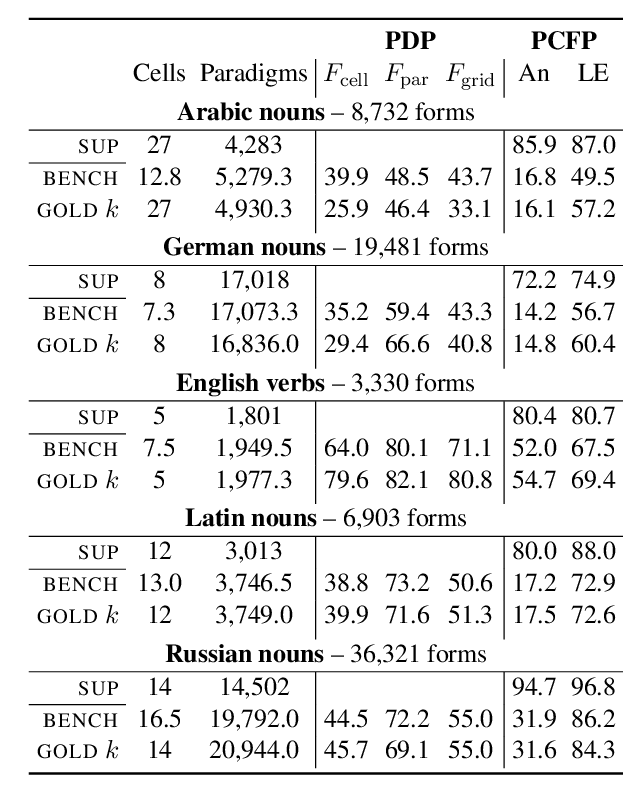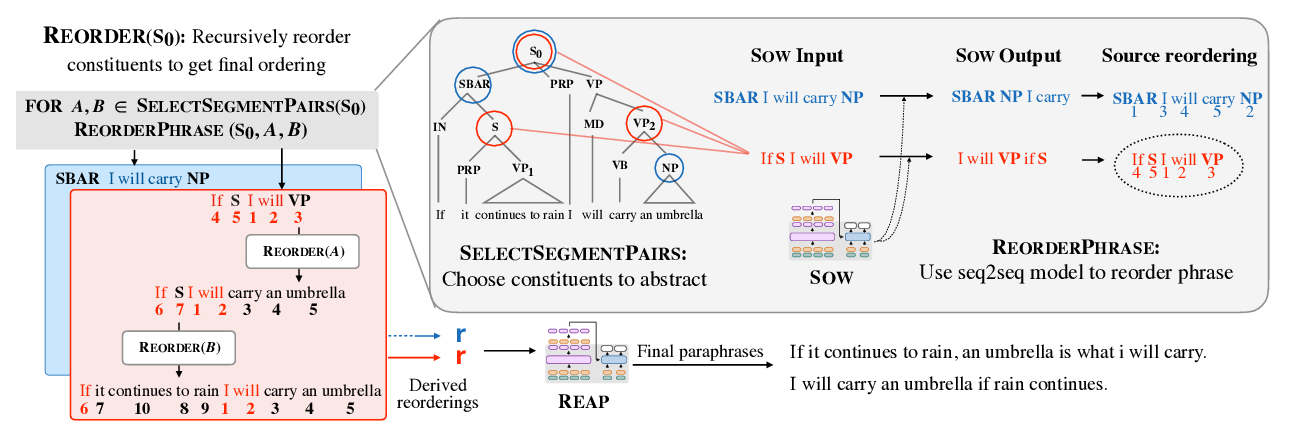Bootstrapping Techniques for Polysynthetic Morphological Analysis
William Lane, Steven Bird
Phonology, Morphology and Word Segmentation Long Paper
Session 11B: Jul 8
(06:00-07:00 GMT)

Session 12B: Jul 8
(09:00-10:00 GMT)

Abstract:
Polysynthetic languages have exceptionally large and sparse vocabularies, thanks to the number of morpheme slots and combinations in a word. This complexity, together with a general scarcity of written data, poses a challenge to the development of natural language technologies. To address this challenge, we offer linguistically-informed approaches for bootstrapping a neural morphological analyzer, and demonstrate its application to Kunwinjku, a polysynthetic Australian language. We generate data from a finite state transducer to train an encoder-decoder model. We improve the model by "hallucinating" missing linguistic structure into the training data, and by resampling from a Zipf distribution to simulate a more natural distribution of morphemes. The best model accounts for all instances of reduplication in the test set and achieves an accuracy of 94.7% overall, a 10 percentage point improvement over the FST baseline. This process demonstrates the feasibility of bootstrapping a neural morph analyzer from minimal resources.
You can open the
pre-recorded video
in a separate window.
NOTE: The SlidesLive video may display a random order of the authors.
The correct author list is shown at the top of this webpage.
Similar Papers
Modeling Word Formation in English–German Neural Machine Translation
Marion Weller-Di Marco, Alexander Fraser,

Modeling Morphological Typology for Unsupervised Learning of Language Morphology
Hongzhi Xu, Jordan Kodner, Mitchell Marcus, Charles Yang,

The Paradigm Discovery Problem
Alexander Erdmann, Micha Elsner, Shijie Wu, Ryan Cotterell, Nizar Habash,

